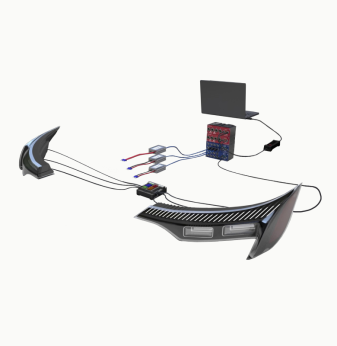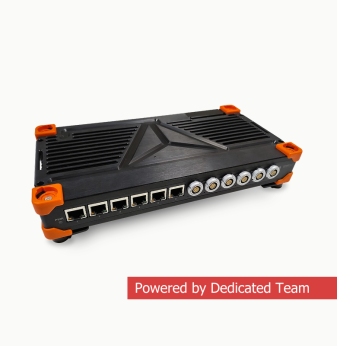Secure Boot & Chain of Trust in Consumer Devices: Architecture & Best Practices

As consumer electronics become smarter and more connected, ensuring device integrity and preventing unauthorized access is no longer optional — it's essential. One of the cornerstones of embedded cybersecurity is Secure Boot, a mechanism that verifies the authenticity of the software running on a device from the very first instruction. Closely tied to this concept is the Chain of Trust, a layered approach to maintaining system security across bootloaders, kernels, and applications.
In this article, we'll explore how secure boot and chain of trust architectures are implemented in real-world consumer devices, the best practices for embedded developers, and how these mechanisms help build safer ecosystems for connected hardware.
What Is Secure Boot?
Secure Boot is a security standard that ensures only trusted software is executed during the boot process. It is typically implemented in hardware and begins executing in a read-only memory region called the Root of Trust (RoT).
If any modification is detected in the firmware or bootloader that does not match a previously verified signature, the boot process is halted or diverted to recovery.
Key Benefits:
- Protects against firmware rootkits and bootkits
- Verifies integrity of code before execution
- Ensures compliance with data protection standards (GDPR, ISO 27001)
Understanding Chain of Trust
The Chain of Trust refers to a hierarchy of validation steps, where each software component verifies the authenticity of the next before handing off control.
Typical Chain of Trust:
- Hardware RoT (e.g., SoC's secure boot ROM)
- Primary Bootloader (e.g., SPL or BL1)
- Secondary Bootloader (e.g., U-Boot, BL2)
- OS Kernel
- Root Filesystem / Application Layer
Each stage in the chain is cryptographically signed and verified by the previous one. Breaking any link compromises system integrity.
Secure Boot Implementation in Popular SoCs
| Vendor | Secure Boot Feature | Hardware Root of Trust |
| NXP i.MX | High Assurance Boot (HAB) | eFuse-based keys |
| TI Sitara | Secure Boot + Secure ROM | OTP or eFuse keys |
| STM32 | Secure Boot / TrustZone-M | Flash-based RoT |
| Qualcomm | Secure Boot (Qualcomm Chain) | QSEE & hardware keys |
| Intel SoCs | Boot Guard / TPM | Fused keys in chipset |
Common Cryptographic Methods Used
- RSA/ECC Signatures: For verifying firmware and bootloaders
- SHA-256/SHA-512: To compute hashes for data integrity
- AES Encryption: To secure communication between components
- X.509 Certificates: For hierarchical key management

Best Practices for Embedded Developers
Implementing secure boot and a robust chain of trust requires detailed planning and careful integration.
1. Start with Security in Mind
Include secure boot as part of your design from day one. Retrofitting security late in the development cycle is costly and unreliable.
2. Use Hardware-Backed Key Storage
Avoid storing private keys in firmware or flash. Use TPM, eFuse, or secure elements for key protection.
3. Sign Everything
From your bootloader to application code, all components should be digitally signed and verified at each stage.
4. Plan for Recovery
Always implement a fail-safe mechanism: dual-partition booting, signed recovery images, or verified OTA update paths.
5. Audit and Monitor
Secure boot isn't "set and forget." Periodically audit your firmware integrity checks and monitor boot-time events.
Long-Tail Keywords and User Questions
What are the best practices for implementing secure boot in STM32?
For STM32 microcontrollers, use the TrustZone-M and Secure Firmware Installation (SFI). Rely on ST's Secure Boot and Secure Firmware Update (SBSFU) examples. Enable readout protection (RDP Level 2) and avoid storing secrets in external flash.
How do I verify the chain of trust in embedded Linux systems?
Use tools like U-Boot's verify command or custom scripts to validate digital signatures. Combine with kernel verification (e.g., dm-verity or signed FIT images). Make sure all public keys are immutable or stored in a trusted source.
Can secure boot protect against hardware tampering?
Secure boot primarily ensures firmware integrity, but it must be complemented with physical security measures (tamper detection, mesh protection) to mitigate hardware-level attacks.
How do OTA updates work with secure boot?
OTA update systems must also sign firmware bundles and verify them before writing to the inactive partition. Always perform a post-update secure boot check before switching boot banks.
Conclusion
In today’s connected world, secure boot and chain of trust are vital for building trustworthy consumer devices. They help ensure that the device only runs authorized software, resisting tampering and cyberattacks.
At Promwad, we integrate secure boot mechanisms and robust chain-of-trust architectures into a wide range of embedded platforms — from wearables to consumer IoT devices. With 20+ years of embedded design experience and partnerships with leading chip vendors, we help tech companies deliver secure, future-ready products.
Looking to harden your embedded product's boot process? Let’s talk.
Our Case Studies












